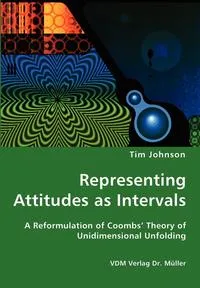Representing Attitudes as Intervals - A Reformulation of Coombs' Theory of Unidimensional Unfolding
Автор: Tim Johnson
Переплёт: Мягкая обложка
📕 Attempts at measuring attitudes abound. Yet the standard representation of attitudes as points on a single dimension is inadequate for representing relationships of favourability and of implication between attitude statements. This book explores an alternative representation; attitudes are represented as intervals and parametized according to their midpoint and latitude. The midpoint can be understood as the 'favourability' of the attitude, while the latitude can be understood as its 'generality' or 'latitude of acceptance'. Coombs' Theory of Unidimensional Unfolding is reformulated using this representation and 18 possible distance measures are examined, including the Minkowski r-metric and the Generalised Hyperbolic Cosine Model (GHCM). These measures are subjected to two empirical tests, the triangle inequality test, and the aligned stimuli test. The results suggest that the triangle inequality fails, so the judgement space is not metric. Furthermore, only the GHCM (item) satisfied both tests and only if the operational function is strictly log-convex. This suggests that the latitude of acceptance is an item parameter. This book is aimed at researchers in social science.
Мнения
